
The water lily is one of the birth flowers for July, the other being the Larkspur. It belongs to the freshwater-plant family Nymphaeaceae, the genus name originates from nymphs, dangerous but beautiful water spirits, in both Greek and Latin mythology. With over 60 species in many colour variations it is a great indicator of the water quality and an important plant for ecosystem of shallow and still fresh bodies of water. The leaves offer food, shade and protection to the aquatic life and the flowers attract pollinators. The fragrant flowers bloom from May through to September but each individual flower only last for about four days before it dies.
Some of the most iconic Water Lily paintings were created by French impressionist artist Claude Monet. In his loose spontaneous style, he painted more than 250 paintings featuring Water Lilies between 1897 and 1926, featuring the pond at his home in Giverny, France. Many of these were painted when his eye sight was failing due to cataracts.
To celebrate this magnificent flower which opens and closes with the sun, here is a step-by-step tutorial as a solitary flower emerges from a golden background.
The Daniel Smith Watercolour Ground is a medium which opens up the possibility of being able to paint with watercolour and Gouache on to surfaces which may usually be tricky for these water-based mediums, which need an absorbent surface to enable the paint to adhere to the surface.
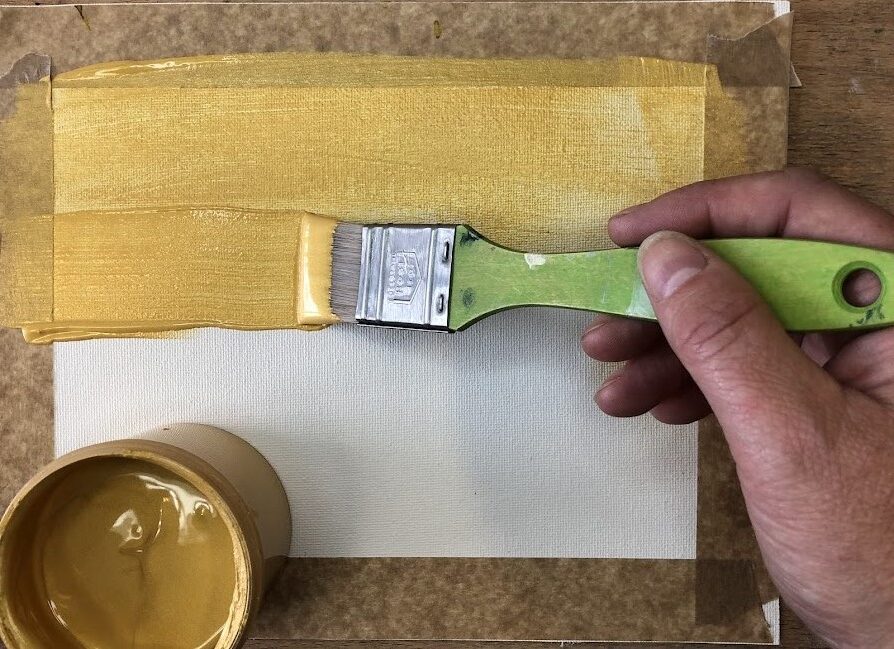
Tape off an area to paint before you begin. Using a large flat brush, apply a layer of the Daniel Smith Watercolour ground (Iridescent Gold) on to the canvas surface and allow this layer to fully dry before applying at least one or two additional layers. In the final layer, the brush was very lightly stroked across the final wet layer to give an even finish.

Sketch out the shapes of the Water Lily with a graphite pencil. The beauty of using the watercolour ground is that you can amend areas by simply recovering with a layer of paint/ground to hide any imperfections.
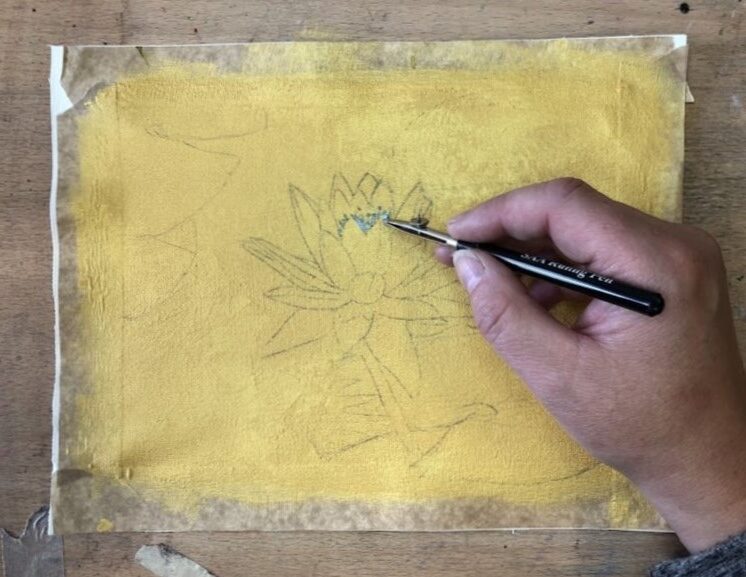
Using a ruling pen and blue masking fluid to mask out the area at the centre of the flower where the stamens are. The idea is that you can paint over the masking fluid and when it is removed you can expose the gold.

Using the white gouache diluted to a mid-viscosity consistency, block out the shapes of the petals. Then with a stronger concentration of white, revisit and strengthen brighter areas within the petals.

A mix of red and blue make a purple which can be used for darker areas and help form the contours of the cupped petals. As the colour dries you will notice a colour shift, where the colour either dries lighter or darker than when wet. Letting areas dry allows you to judge the true colours before adding more colour.
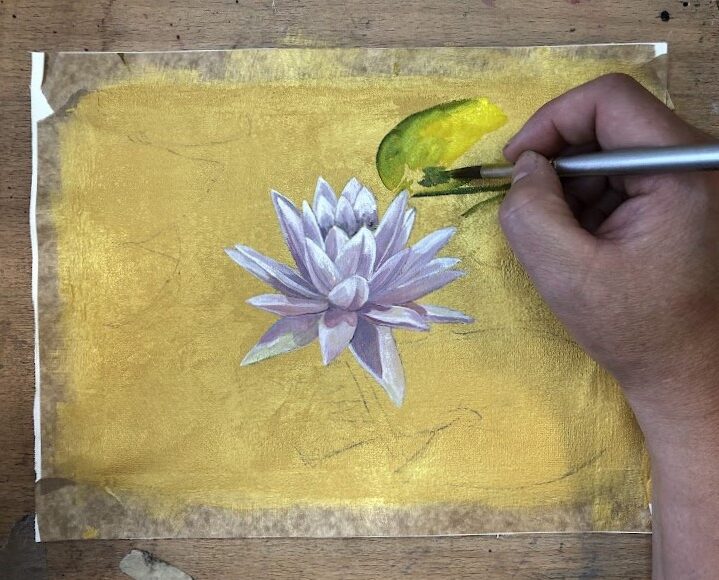
Water Lilies have rounded, floating, waxy-coated leaves on long stalks that contain many air spaces, known as Lily pads. Using yellow as a base colour and creating a mix of blue and yellow for a green, either mixed on the palette or directly on to the surface, build up the colours noting the direction of the slight contours and ridges in the pads.

Now that the masking fluid is fully dry, remove the it with a mask away block (or with your fingers, gently) to reveal the gold of the ground at the centre of the flower.
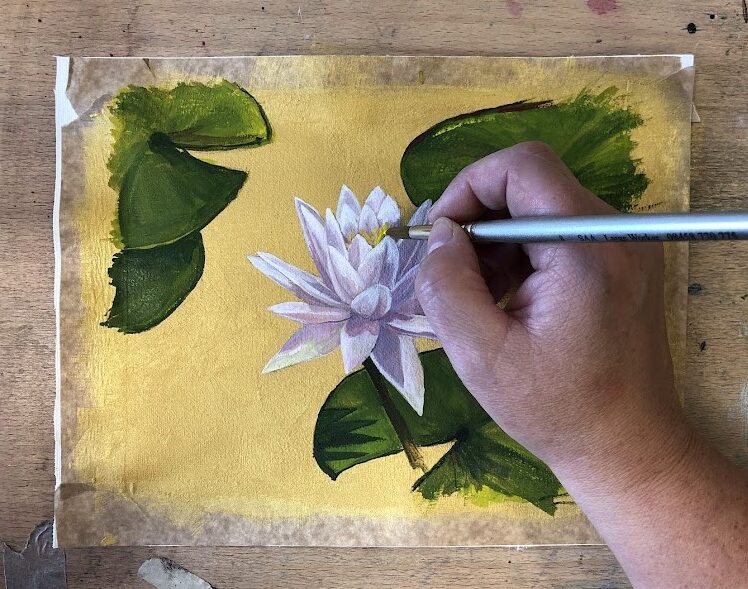
Where you have just removed the masking fluid in the centre of the flower, add a little yellow to make the stamens stand out a more.
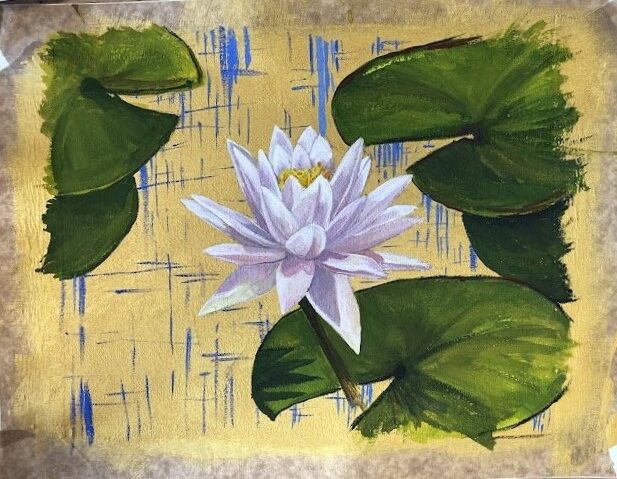
Inspired by a woodcut with the grain splitting and colour underneath being exposed, i wanted to replicate this texture in the water. Mix a little white with blue to create a paler blue and add some vertical and horizontal lines across eachother.
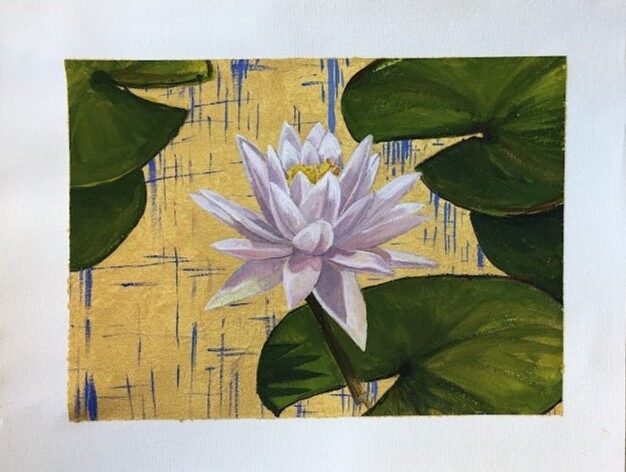
Lift off your masking tape to reveal the finished painting of a solitary Water Lily standing regal against a golden background. The gold watercolour ground creates a unique, gilded background for this splendid flower.